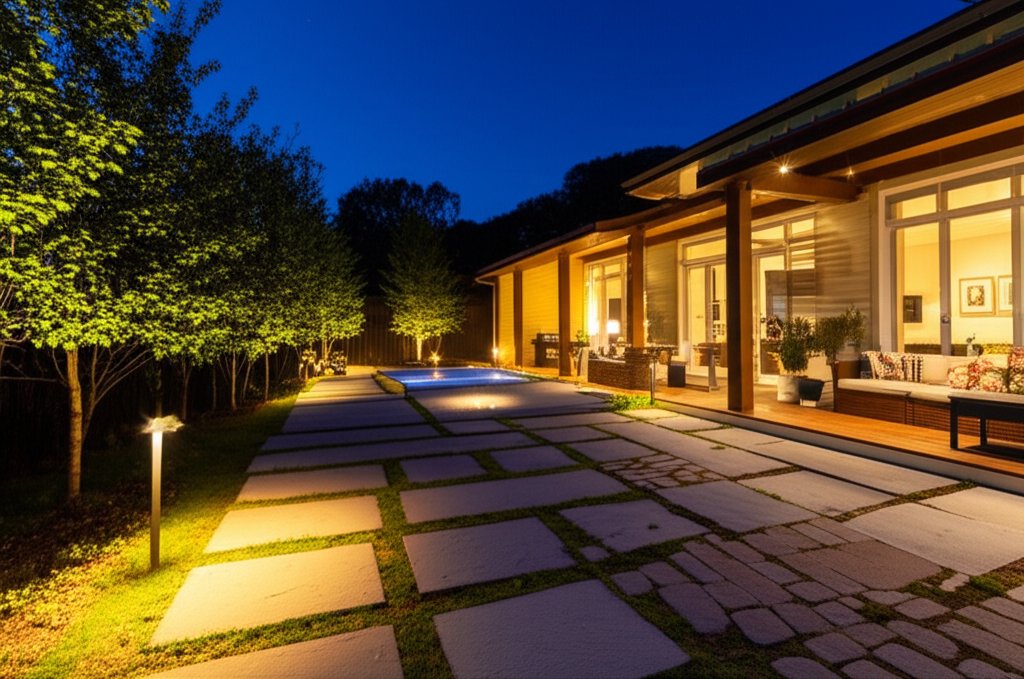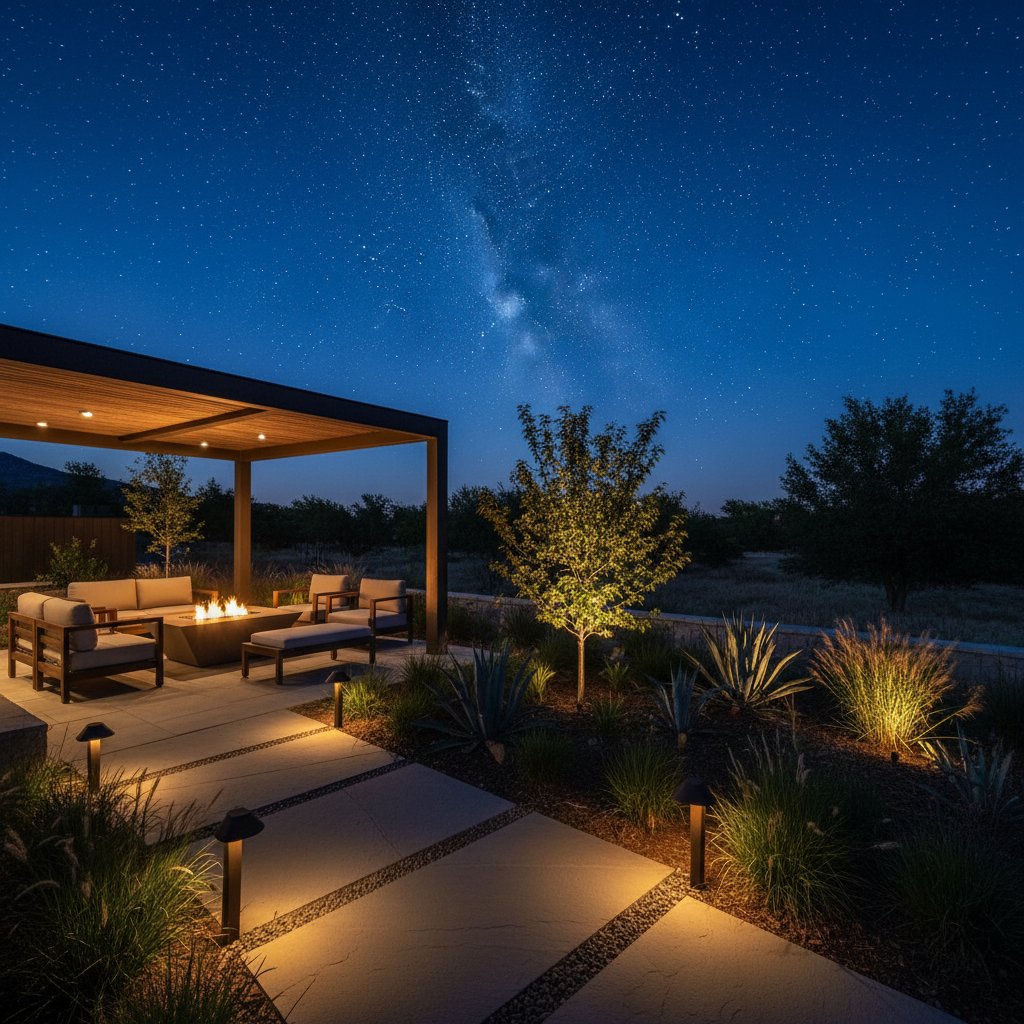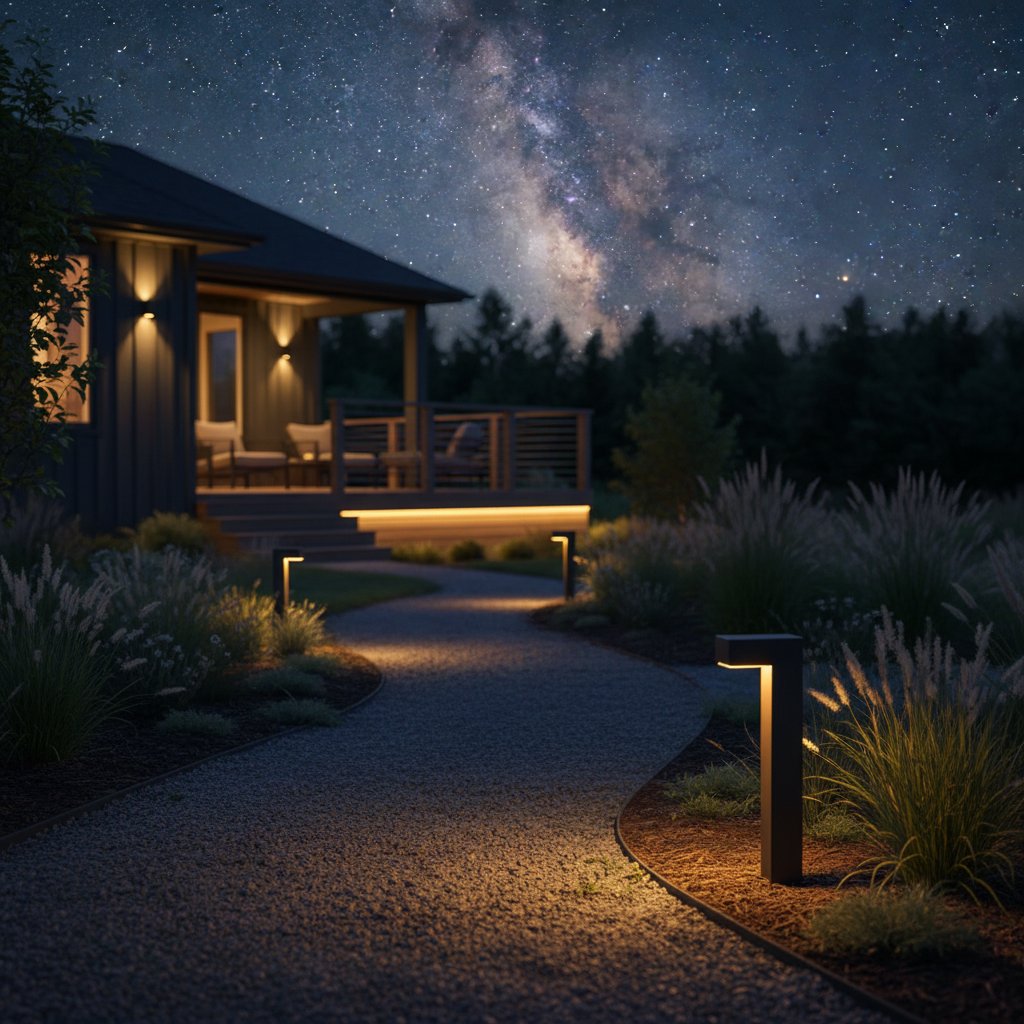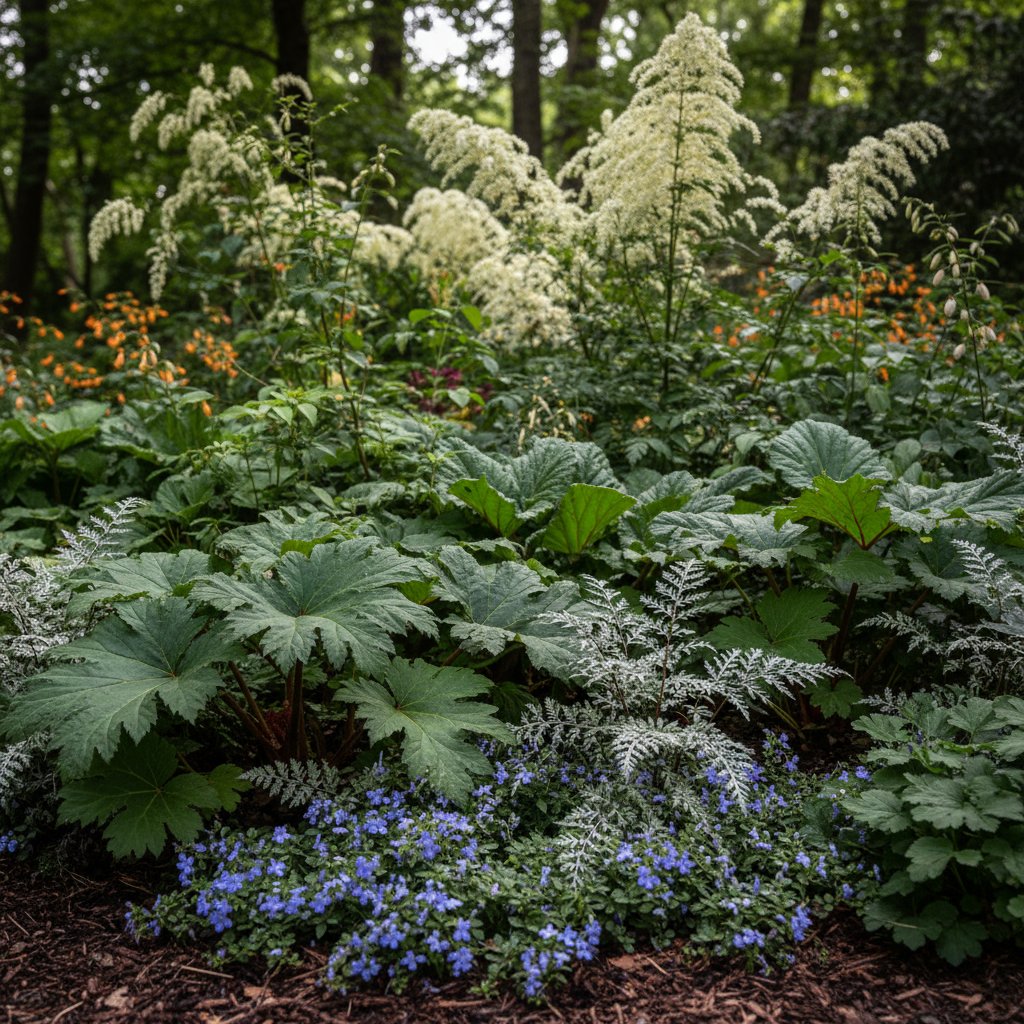Enjoy Outdoor Glow Without Light Pollution Woes
Outdoor lighting transforms your yard into a welcoming space after sunset. It highlights landscaping features, enhances safety, and extends enjoyment of the garden. However, excessive or poorly directed light can spill into the sky or neighboring properties. This phenomenon, known as light pollution, dims stars, wastes energy, and disrupts wildlife. Homeowners can achieve a beautiful nighttime landscape without glare or sky glow through thoughtful design and appropriate fixtures.
What Light Pollution Really Means
Light pollution occurs when artificial light illuminates the night sky or extends beyond intended areas. It results from fixtures that direct light upward, sideways, or remain illuminated unnecessarily. This not only obscures natural starlight but also impacts birds, insects, and human sleep patterns. For homeowners, it creates harsh, overexposed outdoor spaces rather than calm, inviting environments.
A dark-sky-friendly lighting plan directs light precisely where needed. This approach maintains brightness under control while providing visibility and aesthetic appeal. Homeowners need not compromise comfort or safety; they simply direct light with intention.
How Light Escapes and Why It Matters
Three primary issues contribute to light pollution in residential yards:
- Glare: Intense brightness impairs visibility of details and safe navigation.
- Sky glow: Upward-escaping light reflects off atmospheric particles, forming a hazy dome over the area.
- Light trespass: Spillover onto adjacent properties or through windows proves intrusive and inefficient.
These issues often stem from overly bright fixtures, elevated placements, or prolonged operation. Even low-voltage garden lights contribute if unshielded or improperly aimed.
The Basics of Dark Sky Lighting
Dark sky lighting adheres to straightforward principles that minimize wasted light. Understanding these guidelines simplifies the creation of a balanced design.
- Select fully shielded fixtures. Opt for lights that channel all illumination downward, ensuring the bulb remains invisible from the side or above.
- Regulate brightness levels. Employ only sufficient light for comfort and safety; a warm, low-wattage bulb frequently outperforms a brighter alternative.
- Restrict illumination duration. Integrate motion sensors, timers, or smart controls to deactivate lights when unnecessary.
- Favor warm color temperatures. Bulbs rated as soft white or warm white prove gentler on the eyes and attract fewer insects.
- Incorporate layered lighting. Blend path lights, accent lights, and subtle uplighting purposefully, avoiding overlap.
Planning Your Outdoor Lighting Layout
Begin by traversing your yard at night with a flashlight to identify essential illumination zones. Prioritize functionality before aesthetics.
Key areas warranting light include:
- Paths and walkways: Install low-profile fixtures that project light downward, spaced consistently to eliminate shadows without excessive overlap.
- Steps and entryways: Position small recessed or wall-mounted lights to bolster safety.
- Patios or decks: Utilize soft string lights, under-rail installations, or lanterns to foster ambiance minus glare.
- Accent features: Direct narrow beams toward trees, sculptures, or water elements for dramatic effect, ensuring shielding from the sky.
Refrain from bathing the entire yard in light. Instead, create discrete pools of brightness that guide movement. The contrasting darker areas enhance the definition and tranquility of illuminated sections.
Choosing Fixtures That Respect the Night Sky
When selecting outdoor fixtures, seek designations like dark sky compliant or full cutoff, indicating prevention of upward light emission. Examine the shield's angle; the lens should face flat or slightly downward.
Recommended fixture types encompass:
- Downlights: Secure beneath eaves or pergolas to deliver vertical illumination.
- Bollard lights: Employ short posts topped with shields for gentle path lighting.
- Wall sconces: Select models with enclosed tops and frosted glass to mitigate glare.
- Recessed step lights: Embed into stairs or retaining walls to safely illuminate surfaces.
LED bulbs suit this application when chosen wisely. They consume less power and endure longer than incandescent options. Select LEDs with color temperatures under 3000K to achieve a natural, warm glow.
Managing Costs and Efficiency
Implementing a dark-sky-friendly lighting plan requires minimal expense. Costs vary based on fixture quantity and material quality. Basic path lights begin at a few dollars per unit, whereas advanced models with sensors or controls command higher prices.
Benefits include diminished energy consumption and extended bulb longevity. Motion detectors and timers curtail unnecessary operation, lowering electricity expenses. LEDs further economize through reduced replacement needs. Quality investments yield returns over time.
Practical Mistakes to Avoid
Certain oversights undermine meticulous planning:
- Overlighting: Excessive fixtures render the yard flat and severe.
- Inappropriate placement: Upward or sideways aiming generates glare and inefficiency.
- Neglected maintenance: Accumulated dirt or misalignment diminishes performance and uniformity.
- In suitable bulb selection: Cool white or bluish tones disrupt the garden's natural ambiance.
Periodic inspections, conducted several times annually, sustain optimal function and appearance.
How Light Pollution Affects Nature Around You
Outdoor illumination influences more than human experience. Numerous species rely on darkness for navigation, foraging, and repose. Excessive light disorients migratory birds, lures insects from native environments, and modifies plant cycles. Local ecosystems thrive with minimized glare; fireflies, for instance, display heightened visibility and activity in dimmer settings.
Precise light control fosters equilibrium between residential spaces and surrounding nature.
Simple Upgrades for Existing Lighting
Comprehensive replacement proves unnecessary for many setups. Incremental modifications enhance older systems effectively.
- Affix shields or caps to obstruct upward leakage.
- Substitute high-wattage bulbs with lower-output or warmer variants.
- Reposition angles to favor downward projection over lateral spread.
- Deploy timers or smart plugs for automated duration management.
Enhancing Nighttime Enjoyment Through Precise Illumination
Outdoor lighting ought to render yards welcoming, secure, and attuned to natural rhythms. Directed with care, it illuminates gardens without compromising the night sky. Initiate with a single area, evaluate outcomes, and refine progressively.
Dark-sky-compliant fixtures safeguard stellar views and promote environmental health. Thoughtful implementation delivers nighttime beauty free from associated pollution.



